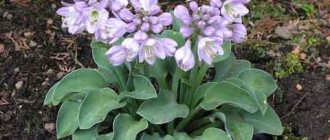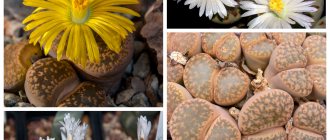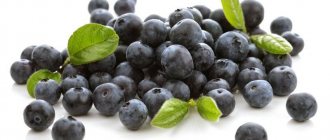Author: Natalya Category: Fruit and berry plants Published: July 28, 2015Republished: March 01, 2019Last edits: November 14, 2020
- Growing conditions
- Reproduction by whiskers (rosettes)
- When to prune
- Diseases and their treatment
Strawberry (lat. Fragaria moschata or Fragaria elatior) is the name of nutmeg strawberry, accepted among scientists since the 18th century. Muscat strawberry, or musky strawberry, or tall strawberry, or Spanish strawberry, or tall strawberry, or garden strawberry, or real strawberry, or European strawberry - how many names this berry has! Since the 20th century, people have mistakenly called strawberries the false berries of garden strawberries (also known as pineapple and large-fruited strawberries), which originate from Chilean and Virginia strawberries, and not from garden strawberries. In Europe, strawberries (garden strawberries) appeared in 1739 as a product of hybridization. It differs from garden strawberries in that it has larger berries. The word “strawberry” is derived from the Russian root “klub”, which means something round, spherical. In fact, it is not so important what you call the berry growing on your site, the main thing is that you care for it properly. We will tell you how to plant strawberries, how to grow strawberries and how to care for strawberries in this article.
Planting and caring for strawberries
- Planting: in autumn (from mid-August to mid-October) and early spring.
- Lighting: bright sunlight.
- Soil: light - loam, sandy loam, chernozem or forest soils rich in organic matter with a pH value of 5.7-6.2.
- Watering: morning, from the end of April - once every 10-12 days, spending 10-12 liters of water for each m² of land. In the summer heat - 3-4 times a week, and from August to October - twice a week. Before flower stalks appear, the optimal way to moisten the soil is sprinkling, and during flowering - drip irrigation.
- Feeding: at least three times a year: in early spring, during budding and in August.
- Pruning: When the leaves begin to turn yellow, become mottled and dry out, prune them.
- Reproduction: by mustaches (rosettes), by dividing the bush. Small-fruited remontant strawberries can be propagated by seeds.
- Pests: strawberry nematodes, spider mites, dusky click beetles, leaf beetles, weevils, snails and slugs.
- Diseases: gray, root and fruit rot, brown, white and brown spots, powdery mildew, fusarium, late blight and verticillium.
Read more about growing strawberries below.
Winter storage
When growing strawberries in greenhouses in winter, it is necessary to maintain light and thermal conditions . For city residents who are forced to commute to work every day, this is very difficult, so the shoots can be taken to an apartment on a glassed-in loggia for the winter. Cover the ground in the greenhouse with covering material and black film, then on sunny days it will warm up.
The temperature in the loggia where the plants are stored should be about 0˚C, so in severe frosts you should turn on the heater. From mid-January, you need to set strawberries to at least 8 hours of daylight, that is, additionally illuminate them with lamps. In March, daylight hours can be increased to 16 hours, then already in early May you will be able to taste fresh berries.
Botanical description
Homemade strawberry, a close relative of which is strawberry, is a perennial herbaceous plant with an erect, pubescent stem 15 to 40 cm high. The root system of strawberry, fibrous and branched, penetrates 30-40 cm deep into the soil. Strawberry leaves are basal, short-petioled, collected in a rosette , large, trifoliate, consisting of ovate leaflets with broadly toothed edges. The upper side of the leaf blade is pubescent, the lower side is densely hairy with protruding veins. In domestic strawberries, there are peduncles, elongated creeping shoots (strawberry tendrils) and shortened annual stems (horns).
Strawberry productivity is determined by the number of horns in the bush and the number of flower stalks on the horn. White flowers in quantities from 5 to 12 are collected in corymbose inflorescences. Strawberries bloom last about three weeks. Strawberry fruits, called berries, are actually an overgrown receptacle, on the surface of which are the real strawberry fruits - small brown nuts. The demand for strawberries is difficult to overestimate. Along with such long-standing and honored inhabitants of our gardens as currants and gooseberries, they have not lost popularity over the centuries, which the recently introduced blackberries and blueberries have yet to earn.
Planting strawberries
When to plant
You can plant strawberries in both spring and autumn. In the fall, it is better to do this from mid-August to mid-September, and then next year you will be able to reap a good harvest. If the root system of your seedlings is closed, that is, it is in containers or cassettes, you can use the transshipment method to plant strawberry seedlings earlier - from mid-July to mid-August. It is better to do this on a cloudy day after rain or watering. In spring, you need to plant strawberries as early as possible, as weather permits.
- Bearberry: properties, cultivation, types
The strawberry harvest largely depends on the quality of planting material. You can grow it yourself, and it will cost you less, but this is a very labor-intensive and time-consuming path, because the process will take from one to three years, and the result will be a bush with only one horn. The only advantage of doing this yourself is that you do not have to store the seedlings, and you can plant the seedlings immediately after digging them up, along with a ball of earth, which ensures minimal stress and good survival rate.
But it is best to purchase planting material from well-established nurseries, but do not buy seedlings without soil, with bare roots - they take root very poorly, and you will have to expect a full harvest from them for more than one year. Buy seedlings in containers or cassettes - although this is expensive, it is the fastest and most reliable way to grow a good harvest in the shortest possible time.
Soil for strawberries
Choose a sunny area, protected from the wind, for your strawberries. The soil for growing strawberries should be rich in organic matter. Light loam or sandy loam, as well as chernozem and gray forest soils are most suitable for strawberries; clay soil is the least suitable for strawberries. The occurrence of groundwater is desirable at a level of 60-80 cm, and the pH value is optimal within the pH range of 5.7-6.2. The best precursor crops to strawberries are herbs, cereals, onions, garlic, petunia and marigolds. Strawberries can be grown in one place for 3-4 years, and then strawberries can be planted in the same place only after 2-3 years.
Spring planting
As a rule, strawberries are planted in the fall, but sometimes there is a need to do this in the spring, but you need to prepare the area for spring planting before winter: add 8-10 kg of humus or 5 kg of manure for digging for each m² of soil, 100 g of superphosphate and 50 g potassium salt. Strawberry seedlings for spring planting should be well developed. Before planting, keep the planting material in a cool place for three days. If you did not fertilize the soil with organic matter in the fall, add two or three handfuls of humus and a handful of wood ash to each hole before planting.
The distance between the holes in the garden bed, as well as between the rows, should be about 30 cm, and the depth of the hole should be such that the roots can freely fit vertically into it. When planting, to speed up establishment, the longest root must be pinched. The leaves of the seedlings are also cut off, leaving only 3-4 large leaves on the bush. When planting, the neck of the bush is dug in flush with the surface. You can first pour water into the hole, and only then lower the roots of the seedlings into it, and then gradually fill the hole with soil, compacting it.
Or you can plant the seedlings in dry soil and after compacting the soil, water the seedlings generously. It is advisable to carry out the work on a cloudy day or in the evening, and if you are afraid that sudden frosts may destroy the seedlings, cover the strawberry bed with film.
Planting in autumn
The advantage of planting strawberries in autumn is that next summer you can harvest a good harvest from young bushes, while bushes planted in spring will begin to bear fruit only a year later, if they do not die from return frosts. In early spring, prepare a bed for strawberries by adding fertilizer before digging.
If you don’t have a lot of free space, you can plant early vegetable crops in this bed that will not harm the strawberries - onions, garlic, carrots, celery. A week before planting strawberries, place the seedlings in a cool, damp place. Treat the roots of the seedlings with fungicides. Autumn planting of strawberries is carried out according to the same scheme as spring.
Planting in open ground
Before planting in the garden, you need to properly prepare the beds. The quality of the future harvest, quantity and size of berries depends on this stage.
Related article:
A few tips to help increase your strawberry harvest by 2-3 times
How to prepare the soil
The best place for growing is a sunny, well-ventilated part of the site in the southwest, as the plant needs a lot of sunlight and heat. Ideally, it will be at least a small hill.
The berry is susceptible to various fungal diseases, so it is worth paying attention to soil drainage. It can be made, for example, using broken bricks or pebbles.
The recommended soil acidity level is no more than 5.7-6.2.
Find out more: What kind of soil is needed for strawberries
Boarding procedure
First, the seedlings should be dipped in an iodine solution (1%) and kept in a cool, dark place for a couple of days. It is better to plant on a cloudy or cloudy day to allow it to get used to the light.
The most popular way is lowercase:
- One-liner. It involves planting in single rows at a distance of no more than half a meter between rows. There should be a gap of 15 cm between seedlings.
- Two-line. Seedlings are planted in double rows at a distance of 20 cm from each other. A distance of 30 cm is maintained between rows.
Whatever planting method you choose, you must follow the general rules:
- Use high-quality planting material. The rosette must have developed roots from 7 cm in length, at least 3 rounded leaves with a developed apical bud.
- The planting site must first be cleared of weeds, fertilized (proportions per 1 sq.m: 70 g of superphosphate, 30 g of humus, ammonium nitrate and potassium salt), and thoroughly moistened.
- Consider planting timing to minimize the risk of seedling death.
- Shorten root shoots to 10 cm.
- Small holes are made for each seedling. They are placed so that the roots are in a vertical position. The neck should be flush with the soil. All places where branches and leaves grow should be above the ground.
Related article:
How to get rid of weevils on strawberries
It is important to ensure that the entire root system fits into the previously made hole and does not become crushed. If this does not work, you should deepen the hole, but do not use force.
After planting, the plant needs watering and fertilizing. Each root requires at least 1 liter of water. An infusion of humus or manure is suitable as a fertilizer.
Crop rotation
It is better to grow strawberries on one plot for no more than 4 years. Then a break for a couple of years is needed.
The plant is not very picky about the mineral composition of the soil. It can be planted after many crops: corn, radishes, parsley, carrots, beans, bulbous flowers. The best option is to plant after the predecessors of green manure (especially cereals).
You should avoid proximity to pink flowers: rosehip, raspberry, rowan, hawthorn. Useful allied crops include corn and legumes, since they are capable of enriching the soil with nitrogen.
Related article:
Ten features of growing strawberries in open ground
Strawberry care
Growing conditions
Growing strawberries in the first year after planting serves one purpose - to provide it with the opportunity to build a strong root system, so it is better to remove the tendrils and peduncles that appear on the bushes. As for older bushes, caring for them in early spring begins like this: at the beginning of the growing season, you need to remove from the area the old mulch under which the strawberries overwintered, remove all old, dry, blackened leaves, and loosen the soil between the bushes.
In the future, caring for strawberries will consist of regular weeding of the beds, loosening the soil, watering the strawberries, treatment against pests and diseases, and fertilizing.
Strawberries during flowering
In mid-May, the first flower stalks appear on strawberries. Proper care of strawberries during flowering is the key to the quality of future berries and their quantity. How to feed strawberries during flowering? During flowering, potassium fertilizers, which are needed by strawberries during this particular period, are added to the soil, as well as humus or ash. To increase the number of inflorescences, strawberries are sprayed with a solution of boric acid at the rate of one teaspoon per 10 liters of water.
It is very important to keep the area clean during flowering, weeding out weeds and loosening the soil so that a crust does not form, preventing the roots from breathing. Before the first fruits ripen, it is necessary to mulch the soil between the bushes. Excess leaves and tendrils, which take away moisture and nutrition from the soil, are removed with pruning shears so that strawberries bear fruit with maximum efficiency.
Watering
If you are interested in your garden strawberries producing large fruits, they need to be well watered, but it is very difficult to strike a balance: giving the plant water and at the same time not over-watering its roots. A lack of water causes the surface root system of strawberries to dry out, and the slightest excess of moisture in the soil just as quickly leads to the appearance of gray or root rot.
- Elderberry: growing in the garden, pruning, propagation
When and how to water strawberries? They begin to water strawberries from the end of April. On average, one square meter of strawberry plot requires 10-12 liters of non-cold water, and the frequency of watering in moderate heat is once every 10-12 days. Strawberries in the summer, when the heat sets in, need more frequent watering - up to 3-4 times a week. In August, September and October, if the autumn turns out to be dry, it is enough to moisten the beds twice a week. It is better to water strawberries in the morning, trying to pour water so that drops of water do not fall on either the leaves or inflorescences.
Before flower stalks appear, the best method of watering is sprinkling; to moisten the soil during strawberry flowering, it is more correct to use drip irrigation.
Feeding
Adult strawberries are fed at least three times a year. In early spring, after putting the area in order and trimming the leaves, nitroammophoska is added to the soil in the form of a solution of 1 tablespoon of the drug per 10 liters of water. You can replace the mineral fertilizer with an organic one - an infusion of mullein (1:10) or chicken manure (1:12). Half a liter of solution is poured under each bush. Foliar feeding, consisting of a mixture of microelements - boric acid, ammonium molybdate and potassium permanganate at the rate of two grams of each microelement per 10 liters of water, has an excellent effect on the growth and fruiting of strawberries.
How to feed strawberries during budding and fruit formation? At this time, the crop needs potassium, so ash, an infusion of chicken manure or potassium nitrate are added to the soil. And, as already mentioned, spraying strawberry leaves with a solution of boric acid gives good results. After harvesting and trimming the leaves, add a solution of two tablespoons of nitroammophoska per 10 liters of water to the soil. And in August, strawberries are fed with urea, diluting thirty grams of the substance in ten liters of water - this promotes the formation of flower buds that ensure next year’s harvest. After applying urea, the area is watered.
In addition to all the fertilizers listed, the commercially available special complex fertilizer for strawberries, containing all the elements necessary for the plant, has proven itself well. The use of this fertilizer increases strawberry yields by 30%.
When to replant strawberries
In the fourth year of life, strawberries stop growing, and this leads to a decrease in yield. This is due to the fact that in four years strawberries deplete the soil in which they grow, so they need to change their place every three to four years. It makes sense to replant only strong, healthy bushes that are no more than three years old, and those that are older and will not bear more fruit in a new place - simply remove them. Strawberries are transplanted both in spring and at the end of summer, on a cloudy day.
We have already told you how to choose a good place for a garden bed and how to prepare the soil on the plot, and you also know how to plant strawberries. Dig up a young strawberry bush, carefully shake off the soil from its roots, pinch the roots a quarter of the way, dip them in a manure-clay mash and plant as described in the corresponding section. After replanting, water the bush and cover the soil around the bush with peat or sawdust.
Post-harvest care
We devoted an entire article to the question of how to care for strawberries after harvesting. We invite you to familiarize yourself with this material on our website.
As you can see, growing strawberries in the ground is not as difficult as it might seem, and if you know what to do and when, problems either solve themselves or don’t arise at all.
Watering the plant
It is important to decide how to water strawberries in open ground. If there is little precipitation on the soil during the season, and there is a dry spring and summer, then we constantly water it abundantly, but not excessively, after the plant is planted and intensive leaf growth and flowering have begun. But you need to remember that when strawberries bloom, they don’t water them.
After the rains, with sufficient moisture, the strawberries will develop normally. In case of drought, water in the evening or early morning. If there is not enough moisture, the berries will grow sour.
It is important to know. The ground around the planted bush should be watered and sprinkled with humus or dry soil. Over the next 2 weeks, the soil is gradually moistened so that the roots of the plant take root faster. In the future, the beds are watered every other day.
If strawberries are not grown in greenhouses, then how to increase the yield of strawberries in open ground - they are grown under a film, dark or light. If we line a film or mulch of dry grass, peat, or chopped straw under the rosette, the berries will ripen 7-10 days earlier, and weeds will practically not grow.
When using hydroponic beds, abundant and frequent watering is required with a special solution containing macro- and microelements. It is easier to grow a crop using a drip irrigation system and a base with an NFT nutrient layer. The substrate can be a peat mixture, mineral wool or coconut, previously placed in film. With drip irrigation, the liquid nutrient mass gets under the root. Light does not penetrate the film, but the plant is provided with air exchange.
If NFT is used, then the nutrient solution circulates, all the liquid accumulates in a thin layer at the bottom of the plastic box. It is supplied through hoses connected to a tank containing substances to power the outlets. First, the sockets are placed in plastic cups with holes. The glasses are very close to the layer of nutrient liquid. As they grow, the roots are immersed in the substance coming from the tank. The plant feels good, develops, blooms thickly and bears fruit.
If you grow remontant strawberries at home during cold periods, you need to constantly illuminate the plant for 12-20 hours a day with a lamp with a power of up to 60,000 lumens. You should constantly check the humidity and keep it to 60-70%, but not higher, so that fungi do not develop.
Strawberry propagation
Reproduction by whiskers (rosettes)
During the fruiting period of strawberries, identify developed annual or biennial bushes with the largest berries that are promising for propagation. Select the largest rosettes coming from these bushes, plant the rosettes in a seedling pot and pin them. Leave only the largest mustaches, and remove the remaining creeping shoots connecting the rosette with the bush, as well as the second and third order mustaches. In July, when 4-6 leaves appear on the rosettes, cut off the remaining tendrils and transplant the rosette to a permanent place without shaking off the soil from the roots. Water the bush after transplanting.
Dividing the bush
This method is used to propagate remontant strawberries, which hardly form a mustache. In addition, it is used when there are not enough seedlings. To divide the bush, two- to three-year-old plants with a well-developed root system are used. In autumn or spring, dig up a productive bush and divide it so that each horn has roots and a leaf rosette, then plant the parts.
Seed propagation of small-fruited remontant strawberries
In July or August, collect large ripe berries, cut off the layer with seeds, rub it on a cloth and dry in the sun. Grind the dried mass again, separate the small seeds and store them in a paper bag until planting. In February, soak the seeds for several days in melt or rain water, changing it twice a day.
Before sowing, purchased strawberry seeds are soaked in a growth regulator for several hours. Broken brick is placed at the bottom of the container as drainage, a mixture of two parts of leaf humus with one part of river sand and one part of garden soil is laid out on it, the mixture is moistened and grooves are made in it at a distance of 5 cm from each other. The seeds are scattered to a depth of 0.5 cm, lightly covered and the container covered with glass. You need to keep the container with the crops indoors at a temperature of 20-25 ºC for about two weeks, ventilating and watering the container into a tray daily.
Instead of watering, you can lay a layer of 8-10 cm of snow on the ground. After sprouting, place the container in a bright place. After two weeks, when the first leaf appears on the seedlings, start picking. Very carefully remove the seedling from the soil, pinch the ends of the roots and transplant into pots at a distance of 2-3 cm from each other. In the development phase of 4-5 leaves, seedlings dive a second time according to a 5x5 cm pattern. Before planting in a permanent place, carry out hardening procedures.
- How is it recommended to store roses in winter?
When to plant strawberries in 2021?
Depending on the region, strawberries are planted in the spring (April, May) or in late summer and early autumn. The spring period is the least preferable because you will not find high-quality planting material. All that is sold in the spring are last year's bushes or mustaches, from which you will not expect a good harvest.
The best time for planting and propagating strawberries is the end of summer. At this time, there are many rooted rosettes, which before winter will have time to take root, grow stronger and produce a full harvest in the spring. In any case, try to choose favorable days for planting, which you can see on this page.











